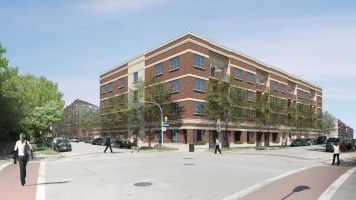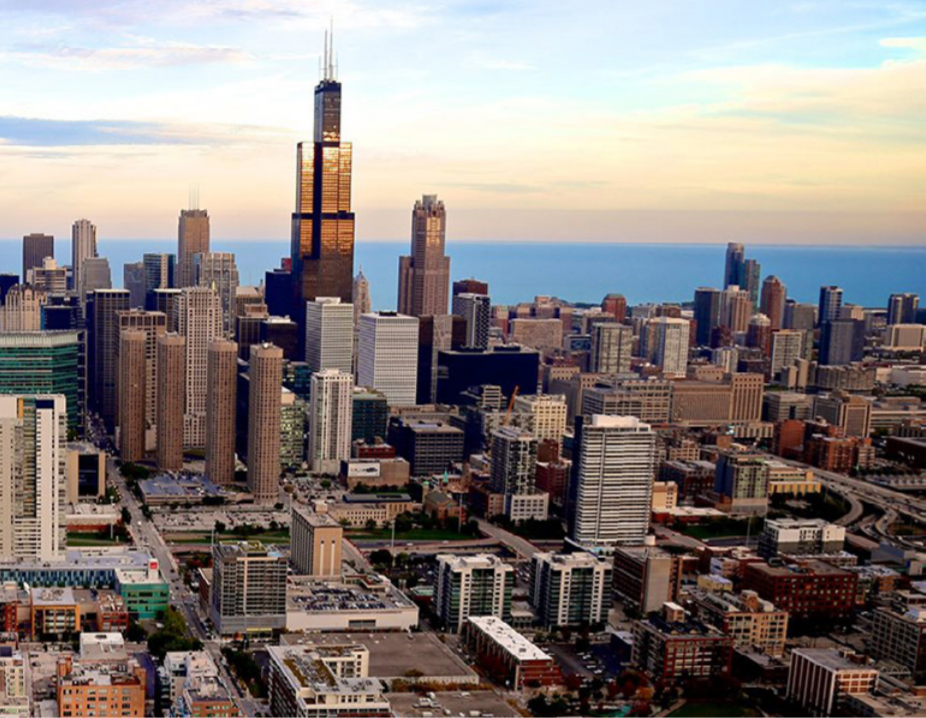September 18, 2017
Re: Draft West Loop Design Guidelines
Dear Mr. Garcia,
Neighbors of West Loop (NoWL) would like to thank the City Department of Planning & Development (DPD) for initiating the process of creating design guidelines for the portion of the West Loop located west of I-90/94 and for including NoWL in the process. We are pleased to see that the draft guidelines include both parameters for developers to apply as they design their buildings, as well as larger-scale infrastructure improvements in the West Loop. We look forward to working with you on the finalization, adoption, and application of these design guidelines.
We have reviewed the draft design guidelines and are in agreement with much of their content. In particular, we support in concept the encouragement of high quality and innovative design principles and materials, preservation of “street wall” scale, and the buffering of parking podiums (though we summarily prefer that parking for larger buildings be located underground). We cannot stress enough the importance of preserving scale and character of the structures and area. We are also supportive of the site-specific guidelines that you have proposed for certain thoroughfares within the West Loop. We feel that the City should consider near-term investment in the implementation of the Randolph Street Vision (Alternate 1, though we have ideas for modifications to further improve this concept), enhanced lighting systems along Lake Street, and the Madison Street Vision (both phases).
The following is a listing of specific comments we have gathered from residents:
- Page 20 – Please update the NoWL Neighborhood Plan summary as follows:
- Show a release year of 2017.
- Use this updated description: “This document, written from the perspective of residents, offers this vision for the future of the West Loop: To preserve and enhance the high quality of life for residents and neighbors of the West Loop, allowing the neighborhood to remain a desirable place for residents to live, play, and work for decades to come. Built upon several recent studies and extensive outreach, the Neighborhood Plan is the first developed exclusively by residents of the West Loop.”
- Page 25 – Residents are strongly against the installation of a bike lane on Lake Street due to safety concerns. Optimal West Loop bike routes would be formed by connecting the existing westbound Randolph Street bike lane to new bike facilities on a reconfigured Randolph Street (as shown elsewhere in the document) and by connecting the eastbound bike lanes on Washington to the protected Loop Link bike lane to Michigan Avenue.
- Page 26 – The estimated population values for 2016 appear to be low. In particular, an increase of only 30 households with children from 2010 to 2016 would seem to contradict the large increase in the number of families in the neighborhood over that span. In addition to the residential, commercial and retail data presented, it would be beneficial to include current occupancy rates for each type, and to track this data going forward. The emphasis on retail at ground level must be balanced with open and green space to avoid the negative impact of ground level storefront vacancies, i.e., residential property at Washington and Desplaines.
- Page 27 – The development maps are missing some projects. The Proposed Developments by Use map has several dot points of the wrong color or in the wrong location.
- Page 29 – We would question whether Van Buren from Racine to Halsted is a “prominent retail corridor.” Instead, Fulton Market Street could be added to the retail corridor list as it already has a good amount of retail property with more planned.
- Page 30 – This report introduces tall buildings as an assumed feature of the guidelines but provides no basis for this approach or an explanation as to why increased density is beneficial to the West Loop. This overlooks repeated community input and concern about density and height creating negative impact on streetscape and scale in the neighborhood.
- Page 31 – The three “building massing scenarios” are misleading. For instance, a setback of the upper floor density could be applied to Scenario 1 and 2 just as easily as Scenario 3. Also, it would seem that a shorter building with setbacks would provide better relation to the existing street wall while retaining better solar access than Scenario 3. In general, by including only these three scenarios in the manner they are presented, the document shows a clear pro-height bias.
- Page 36 – In general, the Design Excellence guidelines are generic and subjective. Terms like “innovative”, “high quality”, and “state of the art” read well but these guidelines do not explain how these items would be applied. Additional examples (perhaps as an extended appendix) would help in this regard.
- Page 42 – Please define what constitutes a “tall” building and define what building heights are recommended based on location within the neighborhood, along wider thoroughfares vs. smaller and narrower residential side streets, etc.
- Page 44 – Guideline 2.1.1 suggests that sidewalk width should be increased but it also says that building bases should be up to the property line. Please address this apparent contradiction.
- Page 47 – We agree that including height transitions to respect adjacent/nearby existing buildings is a recommended guideline, however the draft guidelines fail to provide guidance on the appropriate transition rates , i.e., how much taller than a nearby existing building a new building should be.
- Page 60 – We feel that existing planters along Madison Street should be removed near intersections but should be retained at midblock locations.
- Page 67 – The Design Guidelines need to address a balance between sidewalk cafes and pedestrian access. Perhaps the fees collected for sidewalk cafes could be set-aside for immediate neighborhood improvements, including pedestrian safety.
- Page 72 – Alleys along new developments should meet width requirements per City ordinance. In an effort to address environmental and sustainability concerns, and to harken to the historical aspects of the neighborhood, the Design Guidelines should include recommendations for incorporating pavers instead of concrete or blacktop in alleys.
- Page 73 – While ride share and taxi loading areas in the district are recommended, individual buildings should include pull-offs at entrances or require alley drop offs to avoid interruption of traffic.
These West Loop Design Guidelines would further benefit the community by recommending a neighborhood-wide CDOT traffic plan. This would provide a more comprehensive understanding of the impact on streets and infrastructure that higher density residential and commercial developments introduce than the individual, localized traffic studies that are currently generated for each new development.
As you know, Neighbors of West Loop is in the process of developing our Neighborhood Plan, which will augment these West Loop Design Guidelines by providing additional detail about some of the design parameters that you have defined, e.g., preferred height levels by location, while adding our own perspective on infrastructure improvements in the West Loop.
Thank you again for your efforts in support of the future growth and prosperity of the West Loop. We look forward to working with you to implement design guidelines that further improve the quality of life for residents in the West Loop.
Neighbors of West Loop Board of Directors
cc: Abby Monroe, DPD
Alderman Walter Burnett (27th Ward)
Alderman Danny Solis (25th Ward)
Alderman Jason Ervin (28th Ward)


